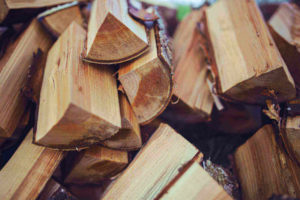There’s nothing quite like a crackling fire on a cold, snowy day, but if you’re not getting the heat or efficiency you’re hoping for, then you may  need to do a closer examination of the fuel you’re using. What you burn makes a big difference in how your fires turn out, and burning the wrong things in your fireplace can lead to some big problems throughout your structure. Learn more below, then turn to our team for an inspection today. We’d be happy to help with it all!
need to do a closer examination of the fuel you’re using. What you burn makes a big difference in how your fires turn out, and burning the wrong things in your fireplace can lead to some big problems throughout your structure. Learn more below, then turn to our team for an inspection today. We’d be happy to help with it all!
What NOT To Burn
Here are some of the things homeowners tend to burn in their fireplace, but shouldn’t.
Trash: If you are all sitting around the fire enjoying some tasty treats, then we can understand how tempting it is to simply toss any paper plates, napkins, wrappers, and the like into your fire. These acts may seem harmless enough, but in reality, it can do a lot of damage to your structure and lead to excess creosote in your flue.
Wet Wood: Many times homeowners will throw whatever wood they can find in the fire with no second thought as to whether or not it has been properly seasoned. This is highly advised against! Wet, fresh wood will take longer to burn through, wasting lots of energy in the process, and it ends up depositing a ton of acidic water into your chimney.
Treated Wood: It’s also very important that you don’t throw any treated (or painted) wood into your fires, as these can release dangerous chemicals when burned that are harmful to your family’s health.
Cardboard: Like treated wood, cardboard releases harmful toxins when burned.
Magazines/Newspapers: Looking to get things going with items from your recycling bin? It may seem like waxy or ink-filled paper would be a good go-to, but these items can put some dangerous emissions into your air if you toss them into the flames.
Plastic: Like most other things, plastic will send a ton of harmful smoke and fumes into your living space – avoid burning it at all costs!
These are just some of the many things you should avoid throwing in your fire. A good rule of thumb is if it isn’t properly seasoned logs, don’t burn it!
What To Burn
So, what can you burn in your fireplace? Experts recommend sticking with wood that has been seasoned for at least six months. What does this mean exactly? Seasoned wood is the fuel that has been dried out for a long period of time. This lowers the moisture content dramatically, and you will wind up getting a hotter, more efficient burn, too.
Burning seasoned wood also keeps harmful water vapors out of your flue. These fumes wreak havoc on your structure and encourage creosote accumulation. Well-seasoned wood should contain less than half of the moisture the log started with, thus decreasing your chances of having smoke and harmful fumes enter your home significantly!
Now, you can either store and season your own wood or purchase wood that has already been seasoned. Purchasing it from someone else is obviously a bit riskier, but there are some things you can look out for to ensure you get the best fuel possible. First, look for logs that are shorter in length and split on the ends as both of these features encourage the piece to dry out faster. It’s also better to pick pieces that are darker in color and smell older/mustier, as this indicates it has been sitting for quite some time.
Seasoned wood will be lightweight, too, and it should make a hollow/clunking noise when smacked against another piece. As long as you stick to these guidelines, you should be good to go!
If you have the space to season your own wood, then even better. Just be sure to store your woodpile off of the ground to avoid any rotting or mold accumulation, and you will want to keep it covered, as well, to protect it from rain and snow. That being said, some air circulation will still be needed to ensure the logs have every opportunity to dry out. A shed with open sides and a strong, sturdy roof is ideal!
Most types of wood will be ready for use in about 6 months, but the longer you can store it, the better. If you start now, you’ll be good to go when your burning season starts up again next fall.
Still Have Questions?
Did you do everything right, but still find yourself facing issues every time you light a fire? Then, the fuel may not be the problem. Give us a call, and we’d be happy to answer any questions in hopes of getting to the bottom of it! Or, we can schedule an inspection, so that our sweeps can get a thorough overview of your system, ensuring no clogs, damages, or broken down parts are present.
All in all, when you work with CinderBox Chimney, you guarantee the best service around. Reach out today, so that we can set you up right!

Recent Comments